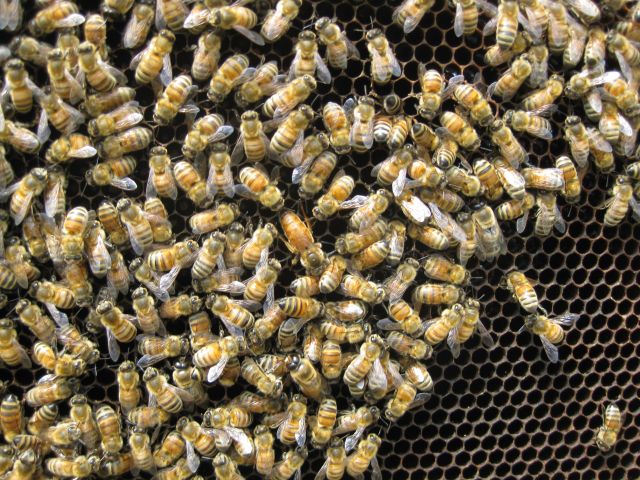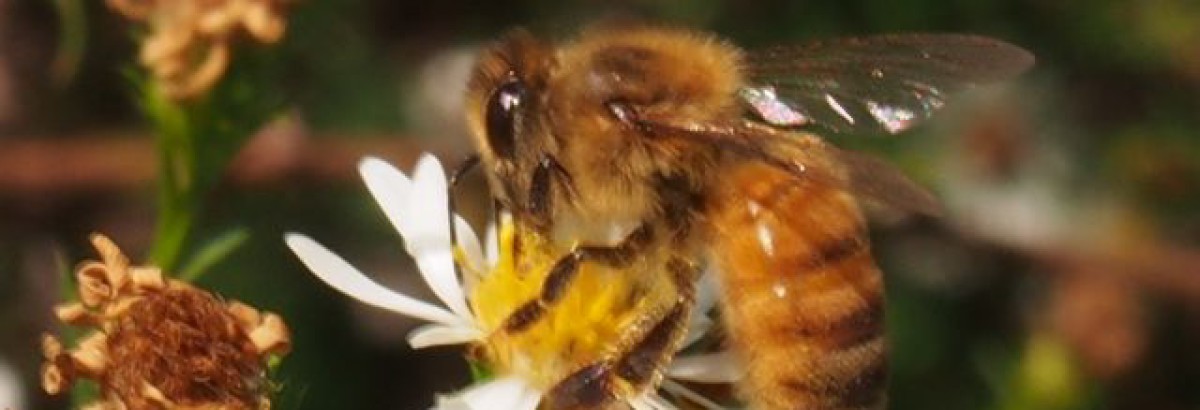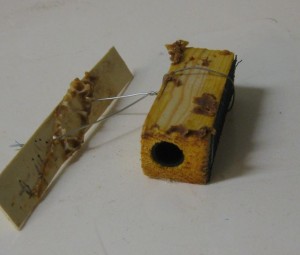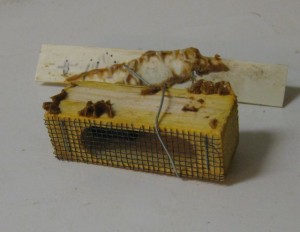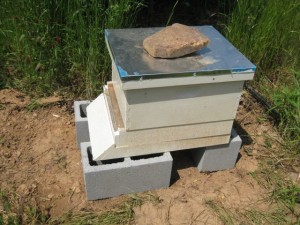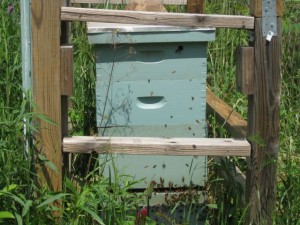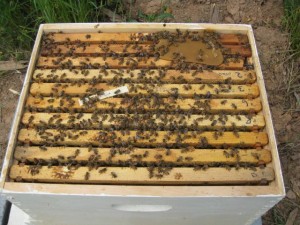I acquired my bees in spring 2010 and am now in my third year with the one hive. I decided it was time for two hives and there are several ways to go about this. Rather than buy a “package” or “nuc” I wanted to propagate my existing bees. After all, they have survived two winters, gave me 4.5 gallons honey last year and appear very healthy and have not needed any medications. So the genetics are good and, what I should have done, as suggested by a commentator, is used a queen cell in the hive to start the second hive. Instead I waited and waited for a promised queen bee and had given up hope when, 8 days ago I received an email that there was a queen I could pick up that morning. The seller is a 10 minutes drive and he had provided me with the nuke which started my beekeeping activities so I have confidence that his queen will be well adapted to my locale (actually he buys his queens from an “excellent” source and I trust him).
So suddenly I had a queen bee and the long wait was over. The queen is provided in a queen cage which is a little rectangular wood box with mesh along one side and a sealed opening at one of the ends. I hastened to open my bee hive and, as I had feared it had already swarmed and the queen was gone -I surmised she was gone since there were no eggs in the cells just sealed brood. What I mean by this is the queen lays eggs, which after a few days turn into larva and then into a prepupa and then a pupa and then a bee. After the larva stage the bees seal or cap the cell. Since I had sealed brood and no eggs or larva it meant the queen had been gone for some days. There were a number of queen cells on the frames and so I assume, once the bees had ensured there would be a future queen for the colony, a number of them together with the existing queen took off or swarmed to start a new colony elsewhere (and took honey with them to keep them going on this risky undertaking). If I had been more proactive I could have taken the queen cells out of the hive together with some frames before they swarmed and I could have started a new bee hive and then the bees may not have swarmed because, without the queen cells, there was no ability for the existing hive to propagate itself. It has been estimated that only 25% of the swarms survive their first year so, quite likely, my former queen and her companions will demise later this year.
I selected 8 frames from the existing bee hive (out of the 16 frames available) choosing 4 with honey and 4 with sealed brood but not with queen cells. The frames were clustered with bees and the recommended procedure is, while holding the frame above the hive from which it is being removed, to give a sudden down thrust of the frame which sends a lot of the bees off the frame and tumbling onto their hive. The theory is that field bees (the ones that forage daily for nectar, pollen and water) do not hold tightly to the frame while nurse bees do and so the sudden movement removes the field bees. So, you may ask, why not have field bees in the new hive? When bees exit a hive for the first time they study the entrance carefully to memorize its appearance and location for their return after foraging. However, after this first memorization they don’t bother to do this again since it is wasted effort, they know where their hive is. So if I had field bees from the main hive in my new hive, when they exited they would have gone food hunting and returned to the old hive. No gain to the new hive. Even worse, if they were diligent and noted the location of the new hive, they could have gone to their old hive and told their fellow workers there was lots of honey in a lightly defended hive just 30 ft away. A suggestion is to place an obstacle at the hive entrance so if you do have field bees when they emerge from the new hive they will see something is radically different and they may decide it worthwhile to take good note and re-memorize the hive appearance and location, and if they do this then they should return to the new hive.
|
|
|
I placed the 8 selected frames in a new hive body on the east side of a small fruit tree, which will protect it from the afternoon sun. As usual my overactive mind got worrying about what could go wrong. I rechecked the 8 frames in the bee hive and found a queen cell, which I removed. Next concern – could one of the queen cells have already hatched and I already have a virgin or mated queen bee on my 8 frames. Young queens are not as noticeable as developed queens – apparently they have more hair and are fuzzier. I looked but didn’t notice a threat. Next concern – if there is no queen in a hive for some time then some of the worker bees assume the role of a queen and begin laying eggs but, because they are not real queens and never mated, their eggs produce drones. And they so take to their new role they may contend with and kill a real new queen. Enough with the worrying – I fashioned a wire loop to hold the queen cage in position between the two middle frames in the hive body, wished them all well and closed up the new hive. I checked a day later to see if the workers were balling the caged queen i.e. clustering aggressively on the screen trying to get at her, or whether they seemed happy. The hive was peaceful, everyone appeared relaxed and content. So four days after creating the hive I opened it again and removed the tape which covered the hole entrance to her cage. And, this morning, some days later I opened the hive again and saw the workers had eaten through the candy which plugged the hole and the cage was empty. I peered fearfully at the bottom of the hive body hoping I would not see a dead queen body, and I did not. The bees were really very placid, even a slight jarring of the hive as I moved the frames did not perturb them. I was working without gloves and without using smoke and I decided to take a quick look and see if I could spot the queen. She is bigger than a worker bee but size is not the criterion since the drones are also bigger than the workers. But the drones have big eyes (all the better to spot the virgin queen when she goes on her mating flight) and squat bodies while the queen has a tapered abdomen. And then I spotted her and she seemed fine. So I closed up the hive and will leave it be. I assume she is a laying queen and when next I open the hive I will check for eggs. In a few days I will add a super on top of the hive body so the bees will have plenty of room for their honey production – for me to savor and for them to get them through the next winter.
|
|
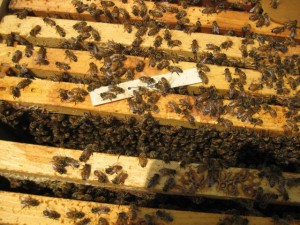
|
